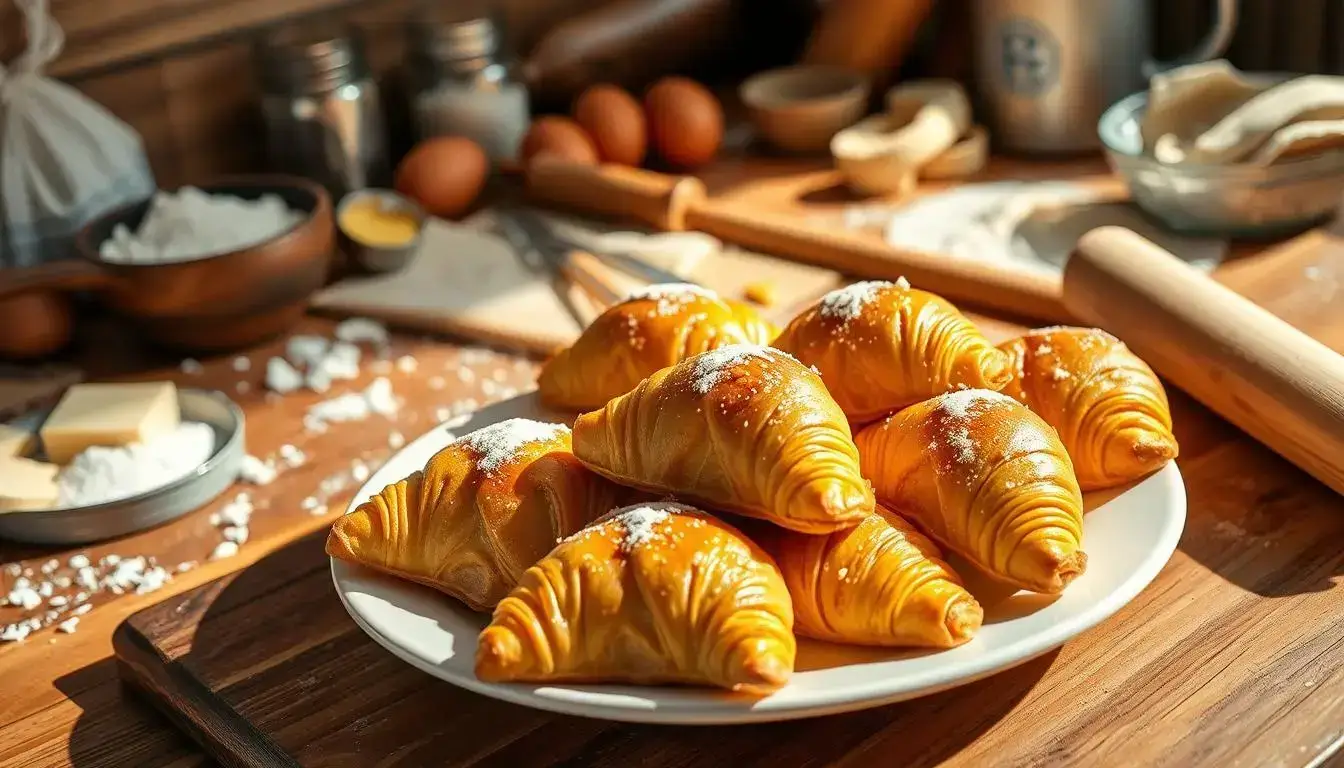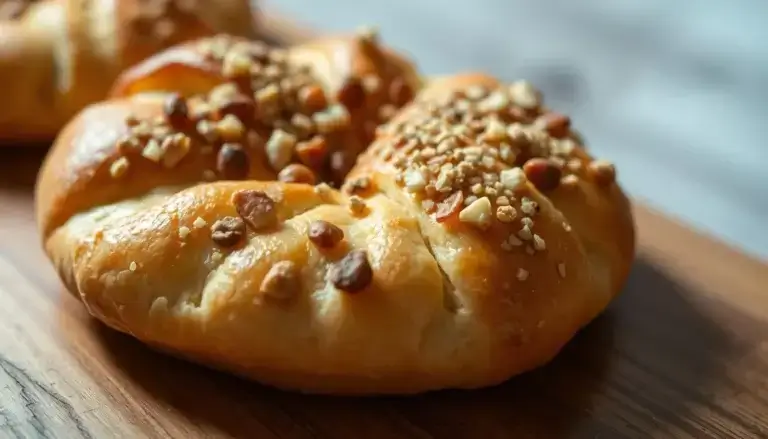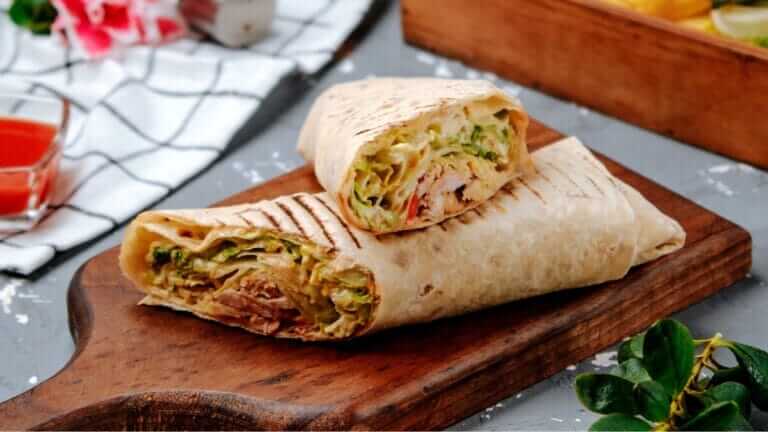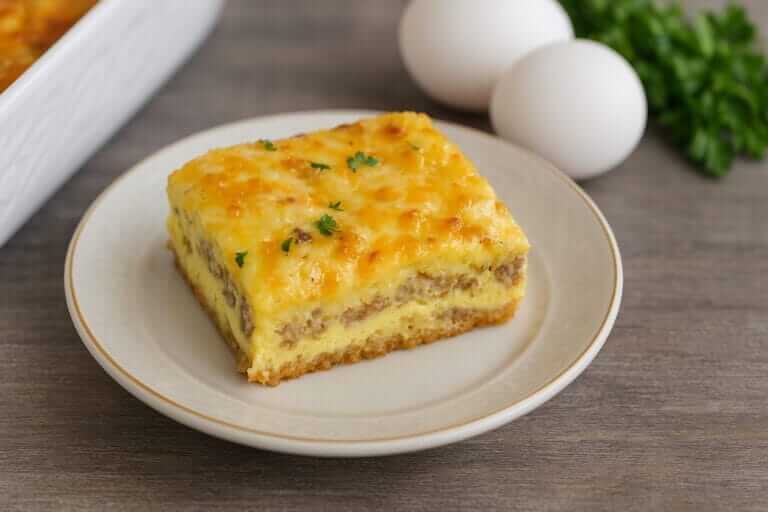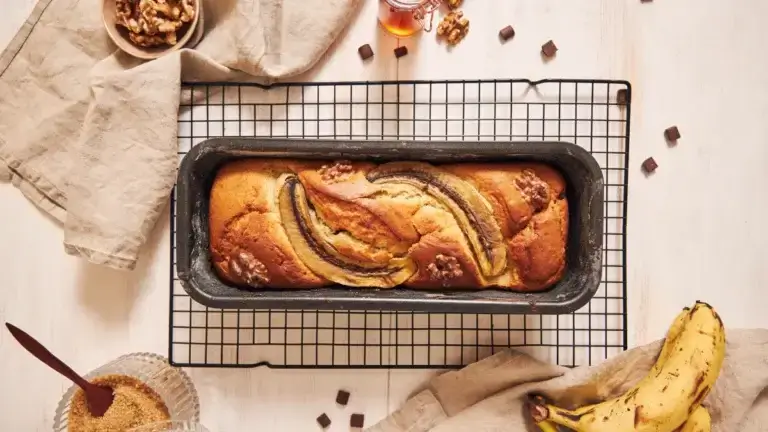Homemade Gipfeli: Perfect Swiss Pastry for Any Event
Did you know that Swiss Gipfeli are as iconic as French croissants? The Swiss Gipfeli, a traditional Swiss pastry, is known for its flaky, buttery texture and rich flavor. Making Gipfeli at home allows you to control the ingredients and adjust the flavors, resulting in a delicious treat that will impress your guests.
Have you ever bitten into a perfectly flaky, buttery crescent-shaped pastry that seems to melt in your mouth? If you’ve visited Switzerland, you might have experienced the joy of enjoying a fresh gipfeli with your morning coffee. While often compared to the French croissant, the Swiss gipfeli has its own unique character and charm. Today, I’m going to show you how to bring this delightful Swiss tradition right into your own kitchen!
Introduction to Homemade Gipfeli
Understanding the history and cultural significance of the Gipfeli tradition can deepen your appreciation for this beloved pastry. In this article, we will guide you through making delicious homemade Gipfeli, with essential ingredients and a step-by-step guide.
Key Takeaways
- Homemade Gipfeli allow you to control the ingredients and customize the flavors. Making Gipfeli at home is a great way to explore traditional Swiss baking.
- The Gipfeli is a Swiss pastry known for its flaky texture and rich taste.
- Homemade Gipfeli are perfect for breakfast or as a snack.
- Making Gipfeli at home is a simple process requiring only a few basic ingredients and kitchen tools.
- Understanding the history and cultural significance of the Gipfeli tradition can enhance your culinary experience.
Understanding the Swiss Gipfeli Tradition
The tradition of Swiss Gipfeli is rich and fascinating. At the heart of this tradition lies a delicious pastry recipe that has been passed down from generation to generation. To fully appreciate Gipfeli, it’s important to explore its history and cultural context.
The Gipfeli has been a staple in Swiss bakeries for centuries. With a simple and rustic appearance, it offers a rich, buttery flavor that is unmistakably Swiss.
The History of Gipfeli in Swiss Culture
The history of gipfeli traces back centuries, with influences from Austria and France shaping what we know today as the Swiss gipfeli. The crescent shape supposedly originated in Vienna after the Ottoman siege in the 17th century, symbolizing the Ottoman flag. This shape was then adopted across various European countries, each putting their own spin on the buttery pastry.
In Switzerland, gipfeli became particularly popular in the 19th century. Today, they’re an essential part of Zmorge (Swiss breakfast) culture and can be found in every bakery across the country.
How Gipfeli Differs from French Croissants
French croissants are known for their layered design. The Gipfeli, on the other hand, is simpler but unique in its own way. It uses high-quality ingredients and careful baking techniques.
Why Homemade Gipfeli Tastes Better
Making Gipfeli at home is a special experience. It allows you to control the ingredients and the baking process. With a classic recipe and a little practice, you’ll achieve delicious, authentic Gipfeli.
Equipment You’ll Need:
Before starting your gipfeli journey, gather these tools:
- Rolling pin
- Large mixing bowl
- Bench scraper
- Baking sheets
- Pastry brush
- Kitchen scale (for precision)
- Plastic wrap or damp kitchen towel
- Sharp knife or pizza cutter
Essential Ingredients for Perfect Gipfeli
Making genuine Swiss gipfeli requires quality ingredients:
- High-protein flour – For the perfect structure and chew
- European-style butter – Higher fat content creates better lamination
- Fresh yeast (or active dry yeast) – Provides the right rise and flavor
- Milk – Adds richness to the dough
- Sugar – Just enough for a subtle sweetness
- Salt – Enhances all flavors and balances the sweetness
Keeping the ingredients cold is key to achieving the flaky layers. Here’s what you’ll need:
For the dough:
| Ingredient | Quantity |
|---|---|
| Flour | 2 cups |
| Cold, unsalted butter | 1/2 cup |
| Active dry yeast | 1/4 teaspoon |
| Salt | 1/2 teaspoon |
| Sugar | 1 tablespoon |
For lamination:
- 1¼ cups (280g) cold unsalted European-style butter
- 1 egg, beaten (for egg wash)
Have all your ingredients ready before you begin. This will help ensure you get a smooth, homogeneous dough. It’s crucial for an easy gipfeli recipe. With the right ingredients and a bit of practice, you’ll succeed in making delicious Swiss Gipfeli at home.

Follow a simple easy gipfeli recipe and use top-notch homemade gipfeli ingredients. You’ll enjoy Swiss pastries at home. Whether you’re experienced or new, with the right ingredients, you’ll make perfect Gipfeli every time.
Step-by-Step Gipfeli Preparation Guide
1. Prepare the dough:
In a large bowl, mix together the flour, salt, and sugar. If using active dry yeast, dissolve it in a small amount of warm milk first, then add to the dry ingredients along with the remaining cold milk. If using fresh yeast, crumble it directly into the flour mixture before adding cold milk. Add the softened butter and mix until a shaggy dough forms.
2. Knead the dough:
Turn the dough onto a lightly floured surface and knead for 5-8 minutes until smooth and elastic. The dough should be somewhat firm yet not sticky.
Shape into a rectangle, wrap in plastic, and refrigerate for at least 1 hour.
3. Prepare the butter block:
Put the cold butter between two parchment paper sheets. Using a rolling pin, pound and roll the butter into a rectangle about 7×10 inches (18×25 cm). Return to the refrigerator to keep cold.
4. Laminate the dough:
Roll the chilled dough into a rectangle about 10×14 inches (25×35 cm). Place the butter block on two-thirds of the dough, leaving a border around the edges. Fold the unbuttered third of dough over the middle third, then fold the remaining buttered third on top, like a letter. Seal the edges by pressing them together.
5. First turn:
Turn the dough 90 degrees so the open end faces right. Roll into a rectangle again, about 10×14 inches. Fold the top third down and the bottom third up, creating another letter fold. Wrap and refrigerate for 1 hour.
6. Complete the lamination:
Repeat the rolling and folding process two more times, chilling the dough for at least 30 minutes between turns. After the final turn, refrigerate for at least 2 hours or overnight.
7. Shape the gipfeli:
Roll the chilled dough into a rectangle about 12×18 inches (30×45 cm) and about ⅛ inch thick. Trim the edges to get clean lines. Cut the dough into long triangles with a 3-inch base. Gently stretch each triangle slightly longer, make a small cut at the base, and roll from the base to the tip, slightly curving the ends to create the classic crescent shape.

8. Final proof:
Place the shaped gipfeli on parchment-lined baking sheets, leaving space between each one. Cover with a damp kitchen towel and let rise at room temperature for about 1-2 hours until visibly puffy.
9. Bake to perfection:
Preheat your oven to 400°F (200°C). Brush the gipfeli with beaten egg and bake for 15-20 minutes until deeply golden brown. Cool on a wire rack for at least 10 minutes before serving.
To make delicious Swiss Gipfeli at home, follow a traditional recipe. Start by preparing the dough, which is key to getting perfect Gipfeli.
The dough needs to be laminated to achieve that flaky texture. This involves folding and rolling the dough several times. It’s a bit delicate, but it’s what makes the pastry truly special.
This resting period is key to relaxing the dough and making it easier to work with later.
| Step | Description |
|---|---|
| 1 | Prepare the dough |
| 2 | Laminate the dough |
| 3 | Shape the Gipfeli |
| 4 | Bake the Gipfeli |
Expert Tips for Flaky and Buttery Results
To make your homemade Gipfeli a success, follow these expert tips:
• Temperature control: Keep the dough and butter cold at all times. This ensures that the butter stays in layers rather than blending into the dough, which helps create the flaky texture.
• Avoid overworking the dough: Overworking can make the dough dense and tough. Handle it gently and allow it to rest whenever needed for a light, airy texture.
• Don’t rush: Give the dough time to rest in the refrigerator between folds to keep the butter firm and maintain the right texture.
Temperature Control Secrets
Right temperature is essential for perfect homemade gipfeli. Proof the dough at 75°F to 80°F and bake at 400°F. Use a thermometer for accurate temperatures.
Make-Ahead and Storage Options
Homemade Gipfeli keep well for a few days at room temperature in an airtight container. You can also freeze them to reheat later and enjoy their flaky texture.
Troubleshooting Common Gipfeli Problems:
| Problem | Possible Cause | Solution |
| Butter leaking during baking | Dough or room too warm | Chill dough longer; work in a cool kitchen |
| Dense, not flaky texture | Improper lamination or overproofing | Ensure butter stays cold; don’t let proof too long |
| Gipfeli unraveling | Not sealed properly when shaped | Press the tip firmly to seal when rolling |
| Pale color | Insufficient egg wash or low oven temperature | Apply egg wash thoroughly; check oven temperature |
| Doughy center | Underbaking | Bake until deeply golden brown |
Storage Tips:
• Keep the ingredients cold, especially the butter.
• Don’t overwork the dough to avoid making it dense.
• Let the dough rest enough for a light texture.
• Maintain the correct temperature for rising and bakingFollow these tips and use an easy gipfeli recipe. You’ll make delicious, flaky, and buttery homemade gipfeli that everyone will love.
| Tips for Homemade Gipfeli | Description |
|---|---|
| Temperature Control | Maintain the right temperature for proofing and baking |
| Make-Ahead Options | Prepare the dough in advance and store in the refrigerator or freezer |
| Avoid Overworking | Don’t overwork the dough to prevent a dense, tough pastry |
Gipfeli Variations to Try:
Once you’ve mastered the classic recipe, try these delicious variations:
- Almond gipfeli: Brush with egg wash, sprinkle with sliced almonds before baking
- Chocolate gipfeli: Place a small piece of dark chocolate at the wide end before rolling
- Whole wheat gipfeli: Replace 1/3 of the flour with whole wheat for a nuttier flavor
- Mini gipfeli: Make bite-sized versions for parties or children
Conclusion: Serving Your Freshly Baked Swiss Pastries

Creating homemade Swiss gipfeli may seem intimidating at first, but the process is deeply rewarding. There’s nothing quite like the satisfaction of pulling a tray of perfectly golden, flaky pastries from your oven and knowing you created them from scratch. With each batch, you’ll improve your technique and develop a deeper appreciation for this beloved Swiss tradition.
The next time you’re looking to impress guests or simply want to treat yourself to something special for breakfast, skip the bakery line and create your own authentic gipfeli at home. With practice, patience, and these tips, you’ll be creating pastries that would make any Swiss baker proud!
Remember, the heart of great baking is practice and passion. Don’t be discouraged if your first batch isn’t perfect—each attempt brings you closer to mastering this delightful Swiss pastry tradition.
Once your Swiss Gipfeli are ready, it’s time to enjoy them. Traditionally, these flaky pastries are perfect for breakfast or brunch, served with jams, honey, or chocolate spread.
But Gipfeli can also make a delicious snack or dessert. There are many creative ways to serve them for even more flavor.
Serving Gipfeli with a good Swiss coffee or a fruit smoothie can make the experience even more enjoyable. Enjoy the warmth of the pastry and the aroma that fills the air while baking.
Stay tuned for more sweet and savory recipes to try at home!
.
FAQ
What is a Swiss Gipfeli?
A Swiss Gipfeli is a traditional pastry from Switzerland. It’s known for its flaky, buttery texture and rich flavor. It looks simpler than a French croissant but tastes just as good.
What is the history of Gipfeli tradition in Swiss culture?
Gipfeli has been a favorite in Swiss bakeries for centuries. It comes from the region’s traditional bread-making. It’s a big part of Swiss culture and food for many generations.
How does homemade Gipfeli differ from store-bought?
Homemade Gipfeli tastes better because you can use fresh, high-quality ingredients. You also get to control the baking process. This makes each pastry flakier and more buttery than store-bought ones.
What are the essential ingredients needed to make Gipfeli?
To make Gipfeli, you need good bread flour, cold unsalted butter, yeast, salt, and a bit of sugar. Keeping these ingredients cold is key for a flaky texture.
What are the key steps in the Gipfeli preparation process?
Making Gipfeli involves preparing the dough, laminating it, shaping the pastries, and baking them. This process creates the flaky, golden-brown texture and taste.
What are some expert tips for achieving the perfect homemade Gipfeli?
For perfect homemade Gipfeli, keep your ingredients cold and avoid overworking the dough. Also, consider making them ahead and storing them properly to keep them fresh and flaky.
How can I serve my freshly baked Swiss Gipfeli?
Traditionally, serve Gipfeli for breakfast or brunch with jam, honey, or chocolate. But you can also enjoy them as a snack or dessert. Try different toppings or fillings for a modern twist.

